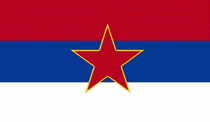
Slovenia. Information.


 Yugoslavia
Yugoslavia
Full information about stamps of Slovenia you can find on site: www.posta.si

 |
Slovenia. Information. |
 |
|||
 |
|||||
See also:
 Yugoslavia Yugoslavia
Full information about stamps of Slovenia you can find on site: www.posta.si |
|||||
 |
|||||